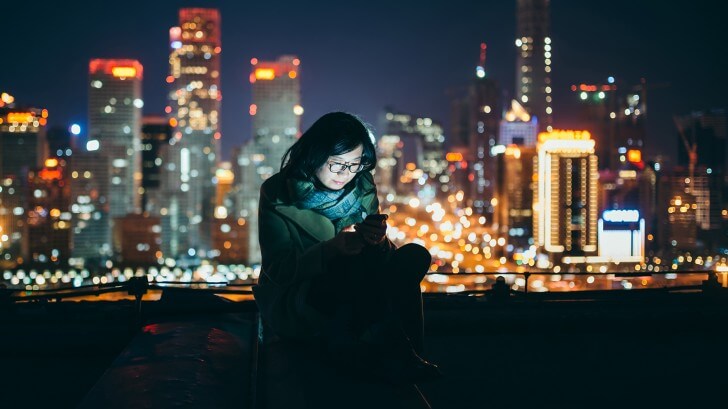BBC Earth newsletter
BBC Earth delivered direct to your inbox
Sign up to receive news, updates and exclusives from BBC Earth and related content from BBC Studios by email.
Technology
Over the last decade, much of Europe and the US have changed the way they illuminate city and town streets.

Councils and local governments from Paris to Brooklyn have replaced high-energy sodium bulbs (the warmer, yellow ones) with energy-saving LED bulbs (with a blue light emitting diode, which can feel harsh in comparison). As well as street lights, most of us are exposed to blue light through smartphones, computers, TVs, and in the home.
Although this was in response to the critical need to use less energy and reduce carbon emissions - LED lights are more energy-efficient - there are growing concerns that LED lights may have a negative impact on human health that we don’t yet fully understand. At the same time as early blue LED lights were commercialised, there was a breakthrough in what we know about the eye. In the 1990s, the photopigment melanopsin was discovered, which explained to scientists how light enters the eye, and why blue light suppresses melatonin production. The cells that house melanopsin are particularly sensitive to blue light and melanopsin is fundamental in setting circadian rhythms. Because of this, the effect of blue LEDs is an increase in alertness and interference with sleep patterns in both humans and animals.
Earlier this year, the World Journal of Biological Psychiatry published a paper by a group of prominent psychiatrists that warned of the potential effects of LED lighting on mental illness.
It raised concerns about the influence of blue light on sleep, other circadian-mediated symptoms, use of digital healthcare apps and devices, and the higher sensitivity of teenagers to blue light.
“My concern about LED lighting followed from a larger, earlier concern about the relationship between light exposure and the occurrence of manic and mixed symptoms in bipolar disorder,” said John Gottlieb, Clinical Assistant Professor of Psychiatry and Behavioral Sciences at Feinberg School of Medicine in Chicago and an author of the paper.
“I had already clearly seen that supplemental light exposure - in the form of bright light therapy - was extremely helpful to patients with depression. What I was slower to realize was that excess and poorly-timed light exposure could have adverse effects on manic states and the sleep-wake cycle,” he said.
The paper has implications for the treatment of mental illness. If a person is prescribed a self-monitoring app, and instructed to use their smartphone to document mood changes, for example, and they do this before bed, it could have an adverse effect on their sleep, circadian rhythms and health.
“Because they are ubiquitous, smartphones represent the larger public health hazard,” said Gottlieb. “Streetlights, though, are not benign and together with the entire set of nocturnal lighting for entertainment, traffic, reading, etc contribute to the phenomena of light pollution, which we are becoming increasingly sensitised to.”
Because they are ubiquitous, smartphones represent the larger public health hazard”

Studies of the impact of blue light on healthy adults show it inhibits melatonin secretion which disrupts sleep and can affect quality of life, physical and mental health and susceptibility to illness. Previous studies of sleep disorders in children and adolescents show a clear and consistent relationship between sleep disorders and frequency of digital device usage.
Currently, the National Sleep Foundation guidelines suggest not using technology 30 minutes before bed and removing technology for the bedroom. However, there are currently no specific guidelines for people with an underlying mental illness or sensitivity to circadian disruption.
As LED technology has rapidly spread across the globe, the focus has been on the visual element and the energy-saving element. Now, scientists, health professionals and the LED industry are working to minimise the blue light in LEDs and create customisable lights that won’t harm those suffering from psychiatric disorders.
Featured image by Mixetto | Getty